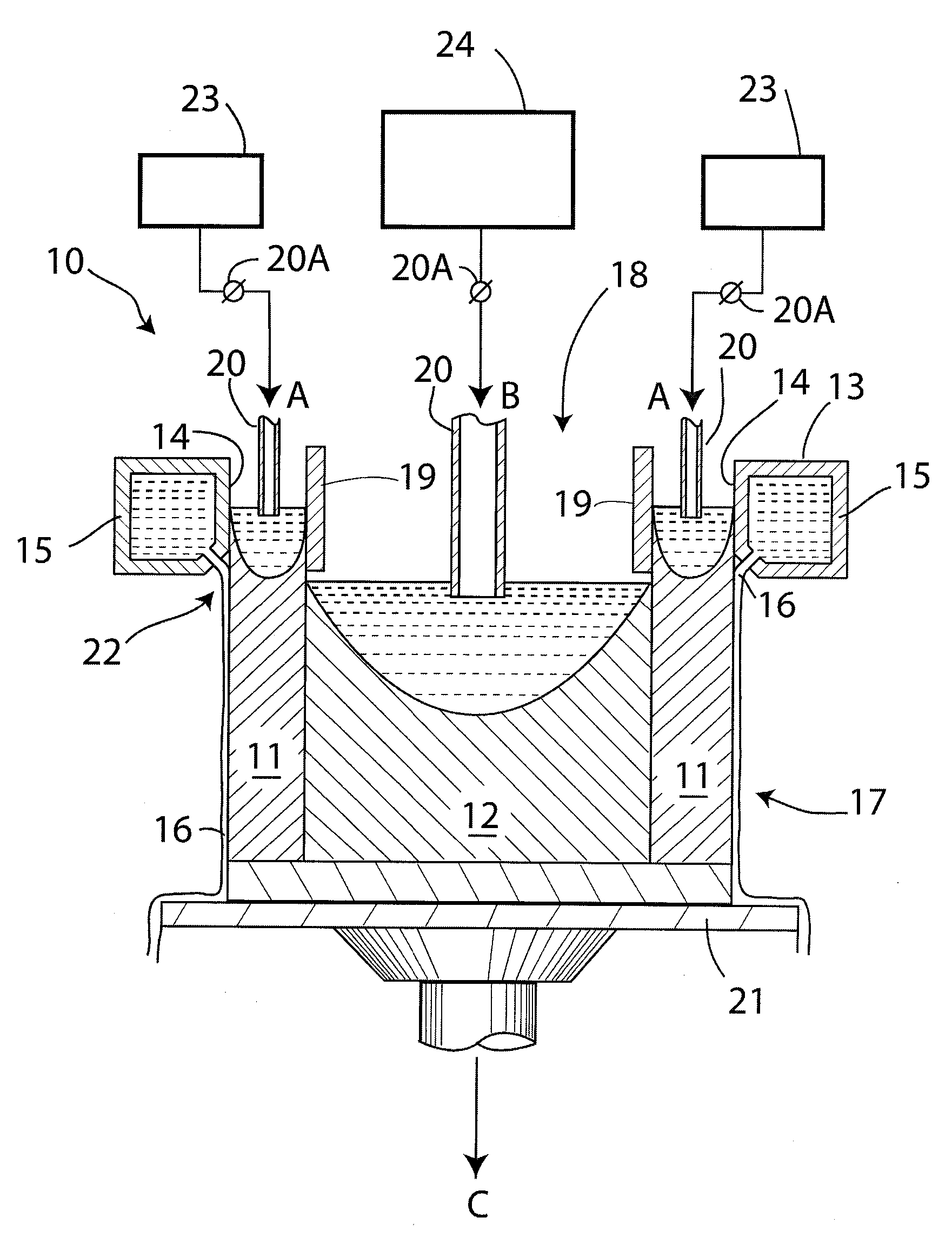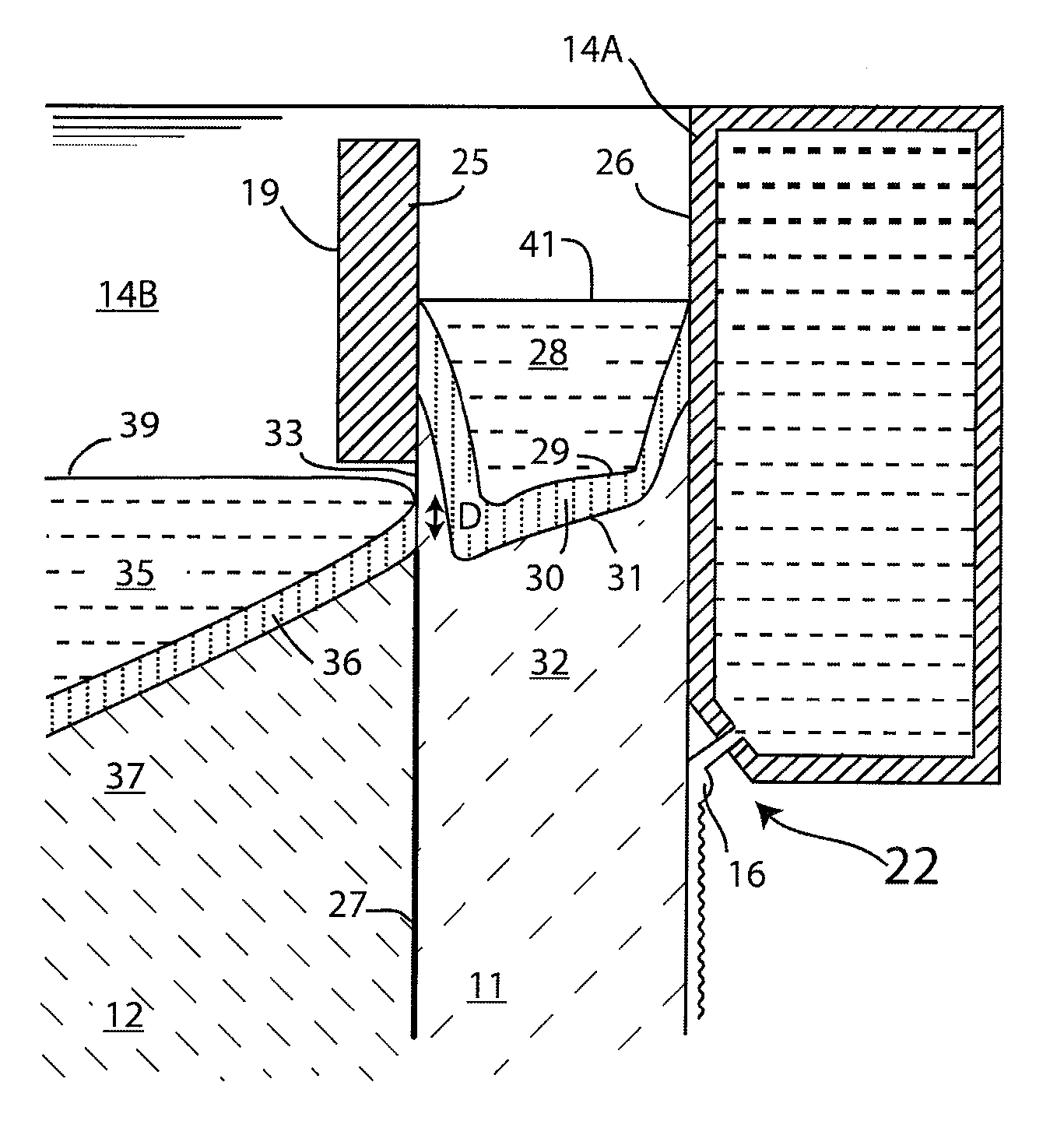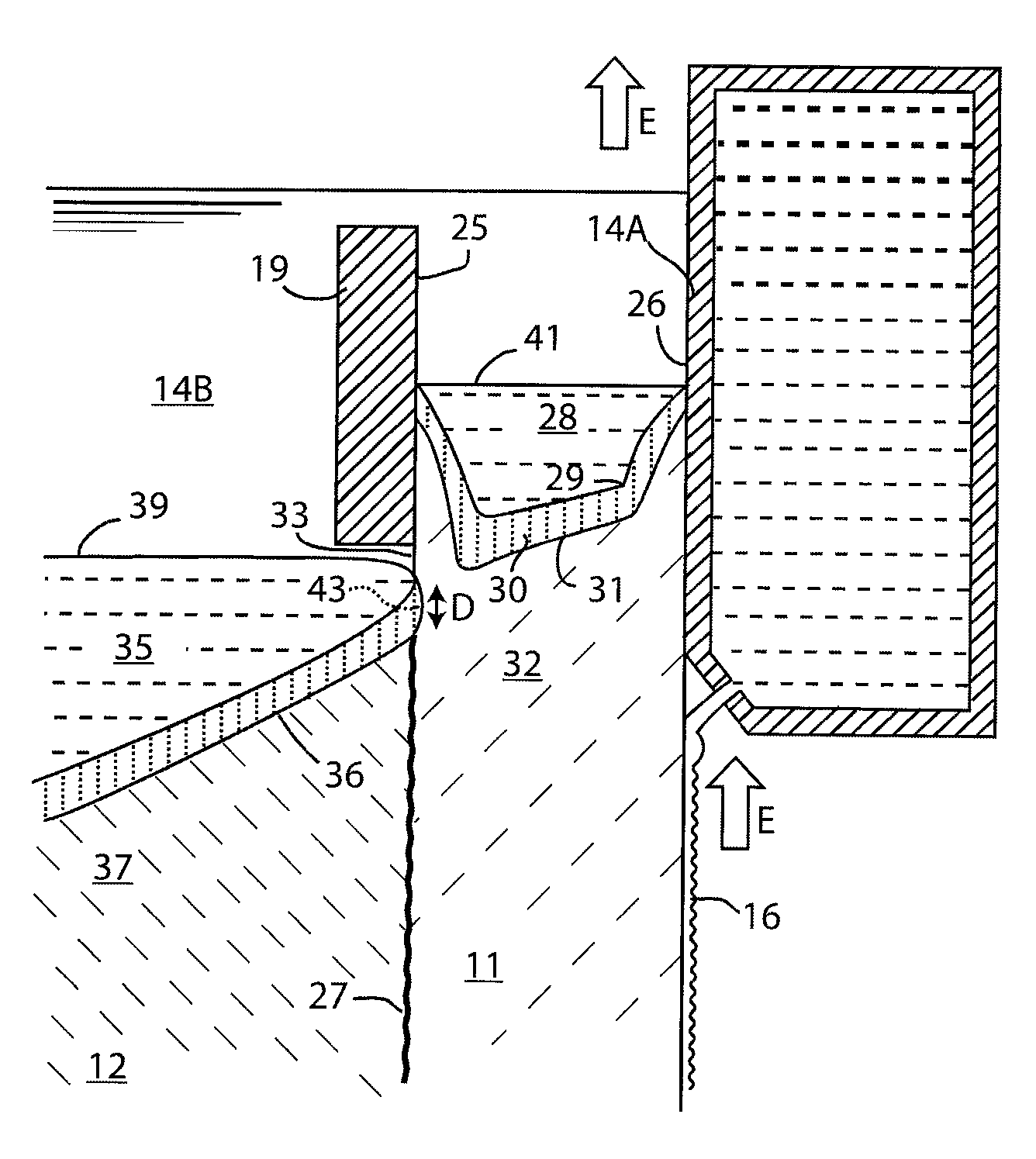Sequential casting of metals having similar freezing ranges
一种金属、复合金属锭的技术,应用在铝和铝合金领域,能够解决合金组合困难等问题
- Summary
- Abstract
- Description
- Claims
- Application Information
AI Technical Summary
Problems solved by technology
Method used
Image
Examples
Embodiment Construction
[0023]The present invention may employ casting apparatus of the general type described, for example, in U.S. Patent Publication No. 2005 / 0011630, issued January 20, 2005, to Anderson et al., which is incorporated herein by reference. , but modified from what is described in this article. The present invention also relates to the techniques described in Wagstaff, US Patent No. 6,260,602 (also incorporated herein by reference).
[0024] It is well known that, unlike pure metals, metal alloys do not melt instantly when brought to a specific melting point or temperature (unless the alloy happens to have a eutectic composition). Conversely, when the temperature of the alloy is increased, the metal remains completely solid until the temperature reaches the alloy's solidus temperature, and then the metal enters a semi-solid state (a mixture of solid and liquid) until the temperature reaches the alloy's liquidus temperature , at which temperature the metal will be completely liquid. ...
PUM
| Property | Measurement | Unit |
|---|---|---|
| temperature | aaaaa | aaaaa |
Abstract
Description
Claims
Application Information
 Login to View More
Login to View More - R&D
- Intellectual Property
- Life Sciences
- Materials
- Tech Scout
- Unparalleled Data Quality
- Higher Quality Content
- 60% Fewer Hallucinations
Browse by: Latest US Patents, China's latest patents, Technical Efficacy Thesaurus, Application Domain, Technology Topic, Popular Technical Reports.
© 2025 PatSnap. All rights reserved.Legal|Privacy policy|Modern Slavery Act Transparency Statement|Sitemap|About US| Contact US: help@patsnap.com



